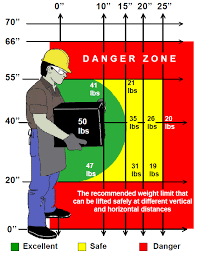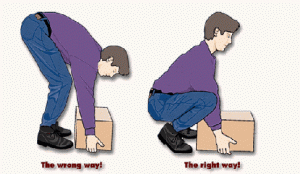Lifting Technique & Injury Risk
Posted by Phil Heler on January 18, 2016One of the most common presentations we see as specialists in musculoskeletal pain is lower back pain resulting from lifting. This may be moving furniture at home or doing a job in the garden or related to materials handling at work.
Reach distance is critical as the further you reach from your body the more unstable your lower back becomes. The lower back essentially acts as a focus point to attenuate both the weight of your own upper body (two thirds of your body weight) and also the weight of the object that you are attempting to lift. This is further amplified as your reach distance increases and particularly if you lift while twisting at the same time. This results in asymmetry and can focus the force of lifting on one specific side of lower back causing further trauma.
Lifting, if possible, does require some basic planning in order to minimise risk of injury. It is important that you can obviously reach whatever you need to lift without any obstruction (this includes anything that could make you slip like cardboard or paper). Remember that it is better to avoid twisting or leaning back while lifting as well as this will put more emphasis on one side of the lower back and increase risk of injury.
It is better to bend the hips and knees (in a squat lift) rather than specifically flex/bend your upper body forwards (stoop lift) in preparing to lift. This is significant as this also recruits your leg muscles and helps to redistribute the load away from the lower back anatomy.
The best-case scenario is to keep an object as close to your waist as possible as the vertebra and back muscles will be in a much more stable position. Also bear in mind that it is best to keep the heaviest side of the load next to your body. Lift in a careful and controlled way and do not snatch or jerk as this makes it harder for the body to compensate.

